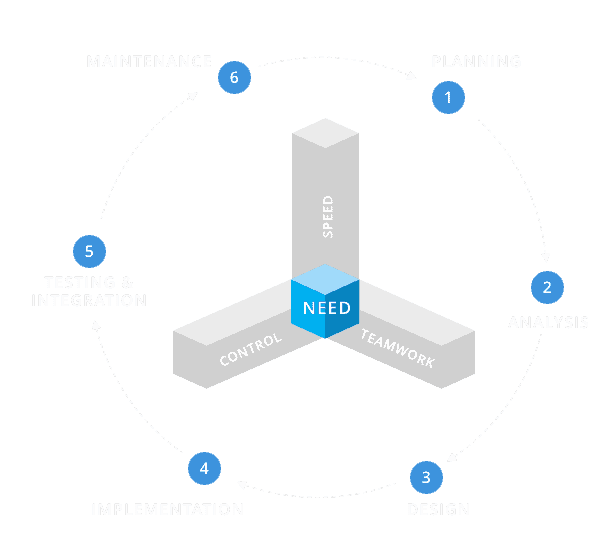RAD + LOW-CODE
Rapid Application Development
Rapid Application Development (RAD) can reduce your risk and delivery time while allowing you to engage more with your customers and business users during software development. See how RAD, coupled with low-code, can help you launch better applications and products faster.
Start for freeWhat is Rapid Application Development?
The Rapid Application Development model of software development emphasizes the User Design cycle of prototyping, testing, and refining. Where the waterfall method is planned and rigid, RAD is flexible and responsive to user input. Despite being 30 years old, the RAD model of software development has been reinvigorated by the modern business need to provide users with engaging experiences across devices—from native mobile and web-based apps to conversational apps.

The Four Stages of the RAD Life Cycle
According to British IT consultant and author James Martin, who wrote the book Rapid Application Development in 1991, there are four stages to the RAD life cycle:
-
![]()
Plan
Business and IT stakeholders collaborate to quickly scope out a project—focusing on key objectives but allowing for flexibility during the prototyping sub-section of the User Design stage.
-
![]()
User-informed Design
Split into a cycle of prototyping, testing, and refining, RAD emphasizes user design by getting a working model in front of the eyes of users early and often. Not only does this inform design decisions and product feature development, but it helps gutcheck the viability of your big idea.
-
![]()
Construct
The modern RAD construct phase is optimized by low-code platforms that facilitate business and IT communication. During the construct phase, low-code platforms with model-driven development (MDD) features empower both developers and business users. The best developers can tackle the thorniest problems because easy-to-understand visual models allow citizen developers to seamlessly contribute new ideas to the product’s designs and features.
-
![]()
Cutover
By compressing parallel stages from the traditional Software Development Life Cycle (SDLC), the cutover phase includes implementation, testing, integration, and maintenance.
What Are The Advantages of RAD?
According to Mendix research, 71% of IT teams are unable to keep pace with growing the needs of their organization, while 96% say that business is affected when a solution isn’t delivered in a timely way. More projects, less time to complete them—sound familiar? Here are some ways rapid development can help:
-
RAD Reduces Risk
RAD requires short, agile sprints that repeat as frequently as the project requires. This iterative approach uncovers bugs and logic issues earlier in the SDLC before they can derail delivery.
-
RAD Increases Quality
Incorporating valuable feedback from business stakeholders and end-users is central to the Rapid Application Development process. User feedback helps refine and target your big idea so that it meets the needs of your business and satisfies your customers.
-
RAD Is Faster
Applying iterative releases and code reusability on a model-driven, low-code platform allows your team to focus less on overwrought processes and documentation. The result? You deliver your solution on time, solving the business need, instead of missing it.
The proof is in the platform
Innovate with a leader in low-code
Featured Analyst Reports
-
![]() Download Gartner Report
Download Gartner ReportA leader in the 2024 Gartner® Magic Quadrant™ for Enterprise Low-Code Application Platforms
-
![]() Download Forrester Report
Download Forrester ReportLeader in the Forrester Wave™: Low-Code Development Platforms For Professional Developers, Q2 2023








